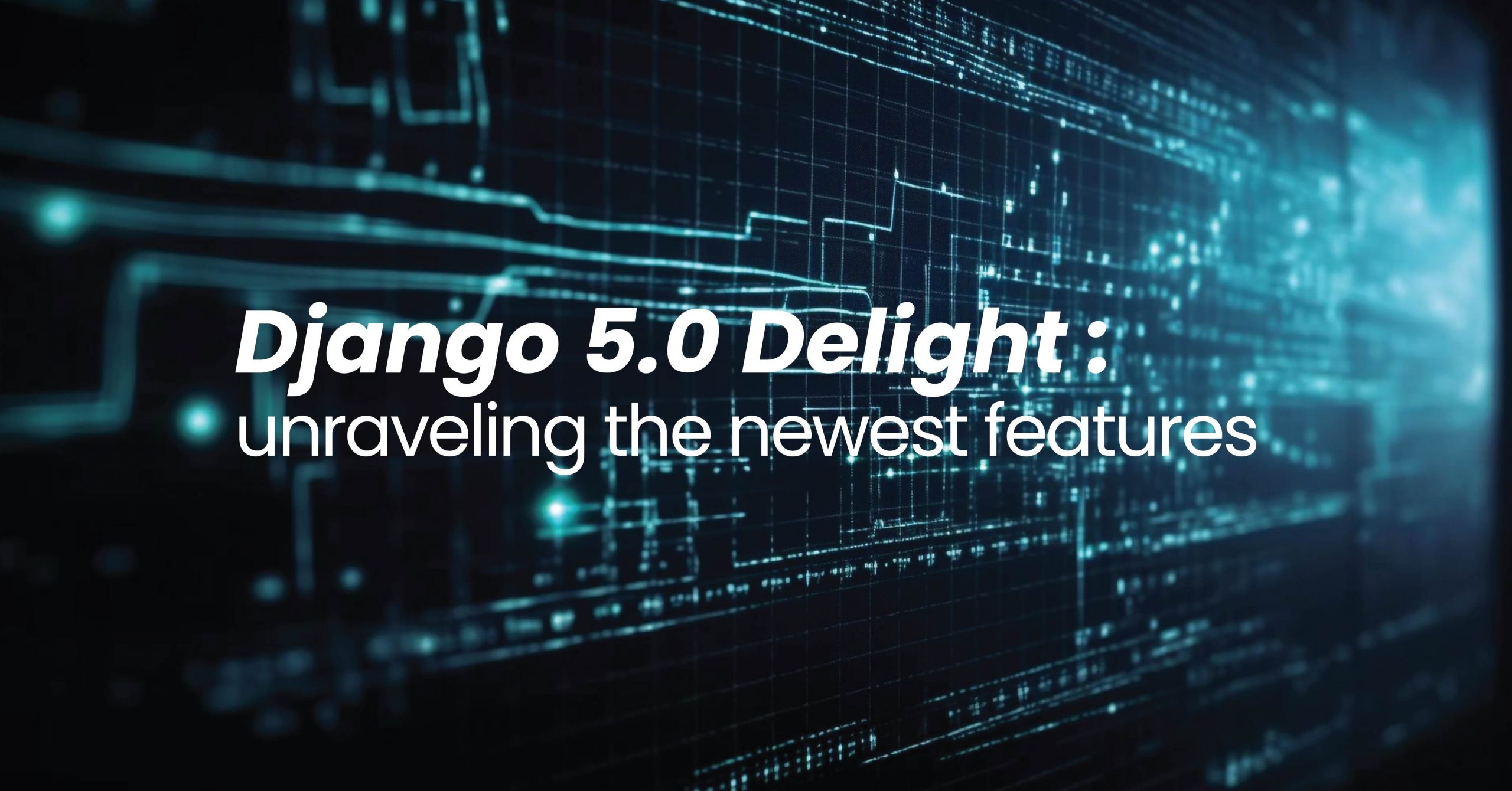Table of Contents
Django 5.0 has landed, bringing a slew of exciting features and improvements. From enhanced Python compatibility to streamlined form rendering and powerful database enhancements, this release is a game-changer for web developers. In this article, we’ll dive into the key features that make Django 5.0 a delight for developers.
Let’s explore the most exciting updates in Django 5.0 and how they can help you build better websites and applications.
1) Python Compatibility
Django 5.0 stays true to its commitment to staying current with Python versions. This release is fully compatible with Python 3.12, harnessing the latest language features and optimizations. Developers can now leverage the improvements in Python 3.12 seamlessly within their Django projects, ensuring a smooth and efficient development experience.
2) Facet Filters in the Admin
Data management in the Django admin interface is significantly upgraded with the introduction of facet filters. These filters provide a quick and intuitive way to narrow down large datasets, making it easier for administrators to find and manipulate the information they need. This enhancement boosts efficiency and user-friendliness in the admin panel, especially when dealing with extensive databases.
3) Form fields are simpler to render
One notable improvement in Django 5.0 is the simplification of rendering form fields in templates. Let’s compare how it was done before and how it can be achieved now.
Before Django 5.0:
<form method="post" action="{% url 'your_view' %}"> {% csrf_token %} {{ form.name.label_tag }} {% if form.name.help_text %} <div class="helptext" id="{{ form.name.auto_id }}_helptext"> {{ form.name.help_text|safe }} </div> {% endif %} {{ form.name.errors }} {{ form.name }} <button type="submit">Submit</button> </form>
Django 5.0 and Beyond:
<form method="post" action="{% url 'your_view' %}"> {% csrf_token %} {{ form.name.as_field_group }} <button type="submit">Submit</button> </form>
The new approach simplifies the rendering of form fields, aligning with Django’s philosophy of clean and concise code.
4) Database-Computed Default Values
In Django 5.0, setting default values in the database becomes more powerful with support for database-computed defaults. Let’s explore how this is achieved with a code snippet.
Before Django 5.0:
class MyModel(models.Model): created_at = models.DateTimeField(default=timezone.now)
Django 5.0 and Beyond:
from django.db.models.functions import Now MyModel(models.Model): created_at = models.DateTimeField(db_default=Now())
The introduction of db_default provides a more expressive way to handle default values directly within the database.
5) Database Generated Model Field
Django 5.0 introduces the DatabaseGenerated model field, allowing developers to create fields whose values are generated by the database. This is particularly useful for scenarios where the database itself handles certain aspects of data generation.
class MyModel(models.Model): side = models.IntegerField() area = models.GeneratedField( expression=F("side") * F("side"), output_field=models.BigIntegerField(), db_persist=True, )
This feature opens up new possibilities for database-driven applications.
6) More Options for Declaring Field Choices
Django 5.0 enhances the way developers declare choices for model fields, providing more flexibility and Django 5.0 adds support for accepting a mapping or a callable instead of an iterable, and also no longer requires choices to be used directly to expand enumeration types.
def get_scores(): return [(i, str(i)) for i in range(10)] MyModel(models.Model) score = models.IntegerField(choices=get_scores) # A callable is allowed.
7) Minor Features
Django 5.0 includes several minor features and improvements, such as enhanced error messages, more asynchronous support, and more robust support for custom database functions. While individually small, these additions collectively contribute to a more polished and developer-friendly experience.
Looking For a Django Development Team?
Share the details of your request and we will provide you with a full-cycle team under one roof.
8) Backwards Incompatible Changes
It’s crucial to be aware of any backward incompatible changes when upgrading to Django 5.0. Review the official documentation for a comprehensive list and guidance on how to adapt your existing projects to ensure a smooth transition.
9) Features Deprecated in 5.0
Certain features are deprecated in Django 5.0, signaling that they will be removed in future releases. Developers should take note of these deprecations and plan accordingly to avoid potential issues in subsequent versions.
10) Features Removed in 5.0
Django 5.0 bids farewell to some features that have reached the end of their lifecycle. Refer to the official documentation to understand which features are no longer supported and plan your migration strategy accordingly.
8) Conclusion
Django 5.0 continues to evolve as one of the most reliable and feature-rich web frameworks. Its focus on improving the developer experience while addressing modern web development challenges makes it an essential tool for 2025 and beyond.
From admin enhancements like facet counts to advanced features like GeneratedField and dynamic field choices, Django 5.0 ensures you can easily build robust, scalable, and efficient applications.
So, whether you’re building a startup MVP or scaling an enterprise platform, Django 5.0 is ready to meet your needs. Don’t wait—upgrade to Django 5.0 today and take your projects to the next level!
This version maintains a friendly tone while explaining features in an easy-to-digest manner. Let me know if further tweaks are needed!
